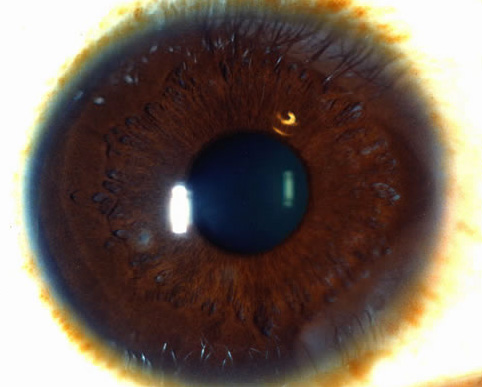
The true brown eye reflects the haematogenic constitution which is more prone to gastro-intestinal, liver, pancreatic, endocrine and blood disturbances.
- Constitution – Haematogenic
- Iris Colour – Brown to Deep Brown
- Description – A true brown iris, with no underlying colours. The texture resembles velvet with few features. Under microscopic examination, however, fine differentiations are apparent. There are numerous chromatophorous cells and the stroma is therefore difficult to distinguish, with markings located mainly in the sectorial zone. Occasional lighter zones are present which give the appearance of sandpaper and indicate areas of inflammation or irritation. These are sometimes found in the heart and/or kidney zones and can be indicative of organic disease in these organs. Cramp rings and radials are often present as are anaemia, sodium or cholesterol rings.
It is not uncommon with this particular constitutional type to find brown blemishes on the sciera indicating latent hepatitis.
(The Oriental haematogenic is usually of a light yellow brown, with a texture resembling rough sandpaper when viewed under a microscope.) - Inherent Tendencies – Anaemia; lack of catalysts (iron, gold, arsenic, copper, zinc, iodine); blood diseases (Hepatitis, Jaundice); muscle spasms; arthritis; chronic degenerative illness; endocrine disorders (thyroid, adrenals and pituitary); spleenic disturbances; poor lymphatic drainage; swollen glands; Hodgkin’s Disease; flatulance; constipation; colonic tumour; dyspepsia; digestive disorders with lowered enzymatic production; frequent intolerance to cows milk; ulcers; liver, gall-bladder and pancreatic malfunctions; Diabetes; circulatory disorders; auto-intoxication.
